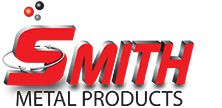MIM Overview
Industry Structure
The MIM industry structure and interactions shows generally the firms fall into a few key focal points. Everything revolves around the fabricators, firms that form components to satisfy the specifications of the users. Conferences on MIM started in 1990 and continue today, where participants gather to share information on technology advances. At these conferences the actors in the industry generally come from one of the following sectors:
- Ingredient suppliers – polymers and powders, approximately 40 firms that provide most of the MIM powders, although about 400 firms supply metal powders of various chemistries, particle sizes, particle shapes, and purities
- Feedstock production – formulate powder-binder mixtures for sales to molding firms; globally there are usually about 12 feedstock suppliers
- Molding firms – both custom and captive molders; 83% of all parts production is categorized as custom manufacturing
- Thermal processing – firms that own de-binding and sintering equipment that provide toll services; about six firms are active in this area; a few firms provide toll hot isostatic pressing (HIP) to force 100% density when required in medical or aerospace fields
- Designers – systems design firms associated with large multinational uses that intersect with the MIM industry, a few independent designers are available to handle projects
- Equipment suppliers – firms that design and fabricate furnaces, molders, mixers, de-binding systems, robotic systems, and other devices such as testing or assembly devices
- Consumables – suppliers of process atmospheres, chemicals, molds, polishing compounds, machining inserts, packaging materials, heating elements, and sintering substrates
- Adjuncts – including researchers, consultants, design advisors, business agents, lawyers, conference organizers, magazine editors, and patent attorneys.
Component production is the central activity. It is split between internal and external products, referred to as captive and custom molders. Likewise it is supported by two parallel supply routes, depending on the decision to self-mix or to purchase premixed feedstock. An example captive molder would be a firearm company that uses MIM to fabricate some of the safety, trigger, or sight components. On the other hand, custom molders also can make these same components, but just as well can be involved in several application areas as determined by their customer base.
As outsourcing increases for multinational firms, custom fabrication is growing. In recent years growth in MIM has come with the shift to custom molding which services a wide variety of applications. The custom molding firms have joined together in efforts to advance the industry, via collaborative marketing efforts, promotion of material standards, publicity via annual awards, and sharing of business data. Although declining, captive molding still remains an important part of the MIM industry. Although the sales growth varies year to year, in recent times the global sales gain has sustained at 14% per year.
